DOI:10.32604/csse.2022.024685

| Computer Systems Science & Engineering DOI:10.32604/csse.2022.024685 |  |
| Article |
Optimized Cognitive Learning Model for Energy Efficient Fog-BAN-IoT Networks
1SRM Institute of Science and Technology, Chennai, 600089, India
2Sri Sivasubramaniya Nadar College of Engineering, Chennai, 603110, India
*Corresponding Author: S. Kalpana. Email: kalpanas1@srmist.edu.in
Received: 27 October 2021; Accepted: 07 December 2021
Abstract: In Internet of Things (IoT), large amount of data are processed and communicated through different network technologies. Wireless Body Area Networks (WBAN) plays pivotal role in the health care domain with an integration of IoT and Artificial Intelligence (AI). The amalgamation of above mentioned tools has taken the new peak in terms of diagnosis and treatment process especially in the pandemic period. But the real challenges such as low latency, energy consumption high throughput still remains in the dark side of the research. This paper proposes a novel optimized cognitive learning based BAN model based on Fog-IoT technology as a real-time health monitoring systems with the increased network-life time. Energy and latency aware features of BAN have been extracted and used to train the proposed fog based learning algorithm to achieve low energy consumption and low-latency scheduling algorithm. To test the proposed network, Fog-IoT-BAN test bed has been developed with the battery driven MICOTT boards interfaced with the health care sensors using Micro Python programming. The extensive experimentation is carried out using the above test beds and various parameters such as accuracy, precision, recall, F1score and specificity has been calculated along with QoS (quality of service) parameters such as latency, energy and throughput. To prove the superiority of the proposed framework, the performance of the proposed learning based framework has been compared with the other state-of-art classical learning frameworks and other existing Fog-BAN networks such as WORN, DARE, L-No-DEAF networks. Results proves the proposed framework has outperformed the other classical learning models in terms of accuracy and high False Alarm Rate (FAR), energy efficiency and latency.
Keywords: Fog-IoT-BAN; optimized learning model; internet of things; micott; worn; dare; l-deaf networks; quality of service
Body Area Networks (BAN) has now moved to more splendid side of innovation as far as calculation, execution and analysis with an innovations of Internet of Things (IoT). IoT based wearable gadgets comprises of battery fueled hubs interfaced with microcontrollers, handsets and sensors. These makes them the unsatisfactory for the unavoidable conclusion of wellbeing boundaries [1–3]. In the interim, IoT-BAN networks experiences the other customary distributed computing boundaries like information calculation, information security and traffic component. To facilitate the weight on the BAN-IoT, another layer of systems administration, could be sent at the network “End Users” (EUs) and information sources, which is known as fog processing, edge registering, or portable edge figuring.
Proposed by Cisco [4], fog computing advances dispersed and restricted preparing of information, which adjusts to the territory theory of the huge information system. The fog computing plays very vital role because of its well organized energy management platforms. These fogs are arriving at its new tallness of its execution, when Deep learning (DL) and Machine Learning (ML) is applied on the large numbers of TBs (TeraBytes) of information gathered which prompts advance the tasks of fog frameworks. Accordingly, fog registering is tipped to be “the following enormous thing” [5] in the body region network market, assuming control over distributed computing in bringing the IoT, huge information and dispersed insight together.
Despite the fact that Fog based networking isn't a trade for IoT cloud organizations, however a free design between the specialist co-op at the cloud and IoT gadgets, to upgrade the “Quality of Experience (QoE) and Quality of Service (QoS)” of clients. The fog network design is entirely flexible, which could be one layer between the clients and cloud supplier. At whatever point client's solicitations for administrations, the supplier will either serve the solicitation at the cloud, or designating it to accessible fog hubs inside the client's area. The fog hubs are the main component of this design, which have three capacities: calculation, correspondence, and capacity. Fog hubs can serve in different places with different principle capacities, and in different structures.
As a key empowering agent for IoT and fog figuring, knowledge alludes to the mix of specific procedures in the activity, control and enhancement of the entire fog network. For example, canny network information investigation makes the framework more context aware and receptive to elements of the climate, with the end goal of enhancing key execution measurements of end clients energy utilization and idleness specifically. Insight and the fog design can benefit from one another, bringing savvy amazing calculation directly close to clients, which significantly lessens the bottleneck of the center organization and builds network adaptability for IoT applications. Simultaneously, IoT applications, for example, [6–8] plan to be human-driven, as human-network cooperation become increasingly noticeable. Our proposed approach will in this way epitomize these two above qualities of insight in an IoT-based fog processing situation; and our fundamental objective is to use their qualities to further develop the framework execution as far as idleness and energy.
The execution of Fog design on BAN-IoT gadgets is new worldview for a successful assortment of clinical information with a proficient analysis. In spite of the fact that it is viewed as more productive, a few difficulties like energy utilization, decrease in delay and intelligent scheduling should be tended to for better execution.
This paper addresses this above mentioned challenges by encompassing the intelligence algorithms to optimize the Fog-IoT-BAN architecture in terms of low latency, high data throughputs and energy consumption. The paper proposes the new protocol Fuel_BAN which incorporates the Optimized Intelligent Fog architecture for BAN devices.
The research contribution are listed as follows,
■ Fog gateways implementation for the BAN-IoT devices.
■ Ant Lion Optimized DL algorithms implementation in fog gateways for an intelligent detection of Cluster Heads (CH) without sacrificing the parameters such as low latency and energy consumption.
■ The MICOTT IoT BAN test beds development for an effective implementation of the proposed protocol for testing, validating and analyzing.
The rest of the paper is organized as follows: Section 2 describes the related works by more than one authors. Section 3 discusses the proposed architecture, working principles, Energy Aware LSTM networks the energy consumption. Experimental setup, results, performance evaluations were presented in Section 4 while Section 5 concludes the paper along with the future improvisation.
Ali et al. [9] introduced an optimized architecture for Human Body Communication (HMC) framework with scalable data rate features. There are totally 2 neural networks are adopted. One is auto encoder especially for transmitter and receiver and another one is for data synchronization. This framework is implemented by CMOS technology. The core size of the framework is 0.116 mm2. Also, this framework produces peak data rate of 5.25 Mbps and has estimated power of 1.468 mW. When compared to other traditional algorithms, this framework outperforms in terms of block error rate (2 dB) and energy efficiency (280 pJ/b). But main drawback of this framework is high computational complexity.
Srilakshmi et al. [10] discussed Machine Learning (ML) techniques for Body Area Network (BAN). This survey considered the following parameters for the comparative analysis namely, QoS, fault detection, anomaly detection, synchronization and congestion control. This framework concludes the all the above mentioned parameters can be satisfied for BAN by incorporating ML framework. Finally this framework provides a statistical report of different ML techniques for BANs.
Xu et al. [11] main aim is to discuss resource allocation methodology for the Energy Harvesting Wireless BAN (EH-WBAN). This framework encounters resource allocation issues by introducing “discrete-time and finite-state Markov decision process” (DFMDP). This framework highly concentrates on relay selection, transmission mode, time slot allocation, energy of each node to maximize the energy efficiency. For the different network settings, this framework provides better results when compared to existing methods in terms of energy efficiency. This framework is also validated in terms of transmission reliability which provides practicability of this framework. But main disadvantage of this framework is it leads to time complexity when it processing huge datasets.
Gupta et al. [12] presented a detailed survey on Health care based BAN frameworks for energy management. This framework concentrates on issues related with multi agent environment interference, power optimization issues in the BAN, Attacks in BAN and QoS parameters. This work also talks about energy control techniques and sensor access control. Finally it concludes that, still there is an open issue in transmission delay related to WBAN need to be concentrated.
Wang et al. [13] presented a method called EDACR (“energy-efficient distributed adaptive cooperative routing”) which encounters the issues related with energy consumption and QoS. The proposed framework incorporates reinforcement learning algorithm and provide balanced QoS and energy consumption based on reliability parameter. This algorithm is an adaptive algorithm and which maintains the rioting tables with minimum energy consumption and which permits uniform energy distribution over the nodes in the network. This framework strongly infers that it significantly outperforms other methodologies in terms of energy consumption while ensuring QoS. The drawback of this framework is it struggles at handling huge data in real time environment.
Alrashidi et al. [14] presented a study on healthcare monitoring by utilizing protocol called IEEE 802.15.6. This framework talks about current problems with the physiological signal monitoring in wireless devices, spectral allocation and signal processing issues of BAN. This framework clearly states the open research challenges of BAN. It strongly infers that still there is a need for innovative technology to handle elder and disabled people health issues via smart health care frameworks to help them. Also, it compares the ZigBee, BLE, UWB related to WBAN. Finally it suggests that strong integration of 5G networks with industry 4.0 will be the better solution for most of the security issues related with BAN architecture.
Bilandi et al. [15] discussed the importance of relay node selection for the energy harvesting of BAN architecture because it resolves the maximum optimization issues. This framework made comparative analysis on 3 metaheuristic algorithms namely GWO (“Gray Wolf Optimization”), ALO (“Ant Colony Optimization”), and PSO (“Particle Swarm Optimization”) in terms of throughput, life time of the network, path loss, and residual energy. The GWO outperforms other 2 algorithms namely ALO and PSO in regards of above mentioned parameters because of its hunting mechanism as well as social hierarchy concept. Hence it provides optimal solutions over the BAN architecture. But only the drawback of this framework is, its high computation time complexity while handling huge data.
Navya et al. [16] introduced an energy-efficient computing methodology to handle emergency messages in critical medical conditions by utilizing the bio sensors and high innovative nodes. The energy consumption is highly reduced during the data transmission by applying threshold data on sensor data and determining efficient path with the help of cost value metric. Suitable transceiver characteristics were chosen in order to maintain balanced network life time and to overcome the constraints of energy optimization. The outcome infers that, it provides better results in regards of throughput, stability period, and propagation delay and path loss reduction. This framework suggest that incorporating ML models in which classification can be done accurately and it will be a better solution in case of emergency situation of health care domains.
Ahmad et al. [17] introduced reinforcement learning algorithm to handle inferences issues in Wireless BAN. This framework is called QIM which is smart CSMA/CA architecture based on Reinforcement learning and has the ability to sense the slots with minimum interference. It can be analyzed in different scenarios and also compared with other method called HCA. This framework provide better results in regards of packet loss ratio, throughput as well as energy. But this framework is need to be updated to handle IEEE 802.15.6 protocol for both collaborative and non-collaborative techniques.
Mushtaq et al. [18] introduced an efficient clustering technique to handle the issues of BANs. Here the BAN nodes are dynamically tuned based on their requirements of operation. In this work link quality is improved and packet loss is significantly reduced by optimizing the range of transmission. This effectively reduced the energy. This framework utilized the optimization algorithm called Whale Optimization Algorithm (WOA) for the optimal selection of CH. This reduces the routing overhead and enhances the performance of the network. It also reduces the communication cost by significantly reducing the number cluster heads. In terms of grid size, transmission range and number of nodes, this framework outperforms other algorithms like GWO, ACO and DFA (“Dragonfly Optimization Algorithm”). But limitation of this framework is, it provides low throughput for real time environment.
Misra et al. [19] addressed optimal sensor selection issues in the wireless body area network. This work analyzed QoS for energy efficient applications. Also, QoS based resource allocation problem is identified irrespective of node locations.
Madria et al. [20] introduced sensor cloud environment to connect multiple users on demand. This framework focused on reducing the execution time and improve the reliability of the BAN. Also, This framework significantly optimized the delay in gateway selection and improved the energy efficiency of the BAN.
The proposed BAN framework's over all architecture is shown in Fig. 1. The proposed architecture consist of three layers such as BAN-IoT layers, Fog layers a Cloud layers. The BAN-IoT layers consist of health sensors interfaced with IoT transceivers and microcontroller. The nodes in the BAN are used to collect the data from the body and transmits to the fog gateways. The proposed classifiers are implemented in the Fog gateways to analyze the data and predicting the energy efficient cluster heads through which the path is determined. The emergency data are then transmitted to Cloud for the other notifications.
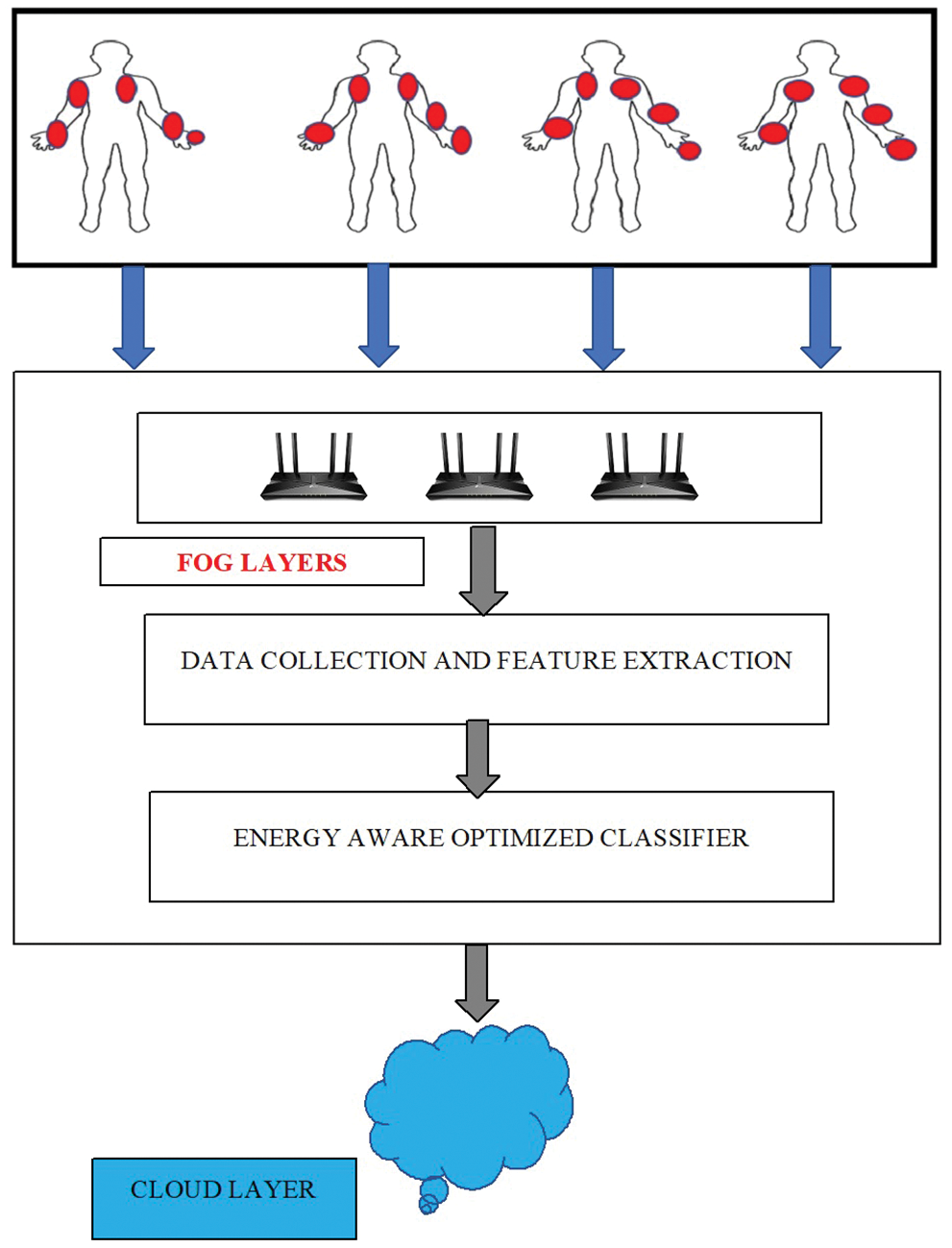
Figure 1: Proposed block diagram for the FUELNETS
The BAN-IoT layers consist of health sensors interfaced IoT transceivers and microcontroller. The hardware parameters used in the BAN-IoT layer are presented in Section 4.
These proposed BAN-IoT nodes works in the 3 different modes such as Sleep Modes (SM), Energy-evoking mode (EEM) and Transmission mode (TM). In the sleep modes, all the BAN-IoT nodes remains to be in sleep mode. Once the BAN-IoT nodes are mounted on the body, these nodes configured to connect with Fog Gateways by transmitting the beacon messages. Once the initialization is done, fog nodes sends the control signals. In this duration the BAN-IoT nodes evokes (EEM) from the SM and calculates the energy consumption with the data gathered by the sensors (TM). The AT command programming is incorporated in the Nodes for the energy measurement as mentioned in [21]. In the Fig. 2 illustrated the frame format measured body parameters are transmitted in the frame format.

Figure 2: Data frame format transmitted from BAN-IoT nodes
The Fog layers collect the extracts the data from the nodes and used for the training the energy aware DL models that are used to predict the cluster heads in the network. The working mechanism of the proposed energy aware DL architecture is detailed as follows.
3.3.1 Energy-Aware LSTM Networks
A Long Short-Term Memory network is the combination of RNN with LSTM units. The network comprises of Cell, IG, OG and FG (Input Gate, Output Gate and Forget Gate). Cell are known to be LSTM memories to remember the values over the time intervals. Let xt, the Hidden Layer (HL) output is ht and its former output is ht−1, the CI (Cell Input) state Ise Ct, the CO (Cell Output) state is Gt and its former state is Gt-1, the 3 gates’ states are
The IG is given as
The forget gate is expressed as
OG is expressed as
CI is expressed as
where
Also HL output is calculated which is then given as
3.3.2 Optimized Energy Aware LSTM
LSTM feedforward networks produces the best performance, non-optimal tuning of hyper parameters such as input weights, hidden neurons, learning rate affects the accuracy of classification. Hence the optimization is required for the tuning the hyper parameters for achieving the best performance. For achieving the best performance, the proposed framework has used for the Ant-Lion optimization [20] for tuning the hyper parameters of LSTM. Since the Ant-lion optimization offers more exploration and exploitation process, the algorithm is used to tune the hyper parameters by sacrificing the computational overhead that leads to best performance of prediction. The fitness function for tuning the hyper parameters are given by
where A is the accuracy performance. The fitness function is calculated at each and every iteration and checks it meets the threshold. The optimized parameters obtained for the proposed architecture to achieve the higher prediction ratio is shown in Tab. 1

The energy and location features are used to input features to the optimized energy aware learning network for the better prediction. The complete working mechanism of the proposed Fog-Based Energy Aware Optimized Learning Platform is described in Algorithms 1 and 2.

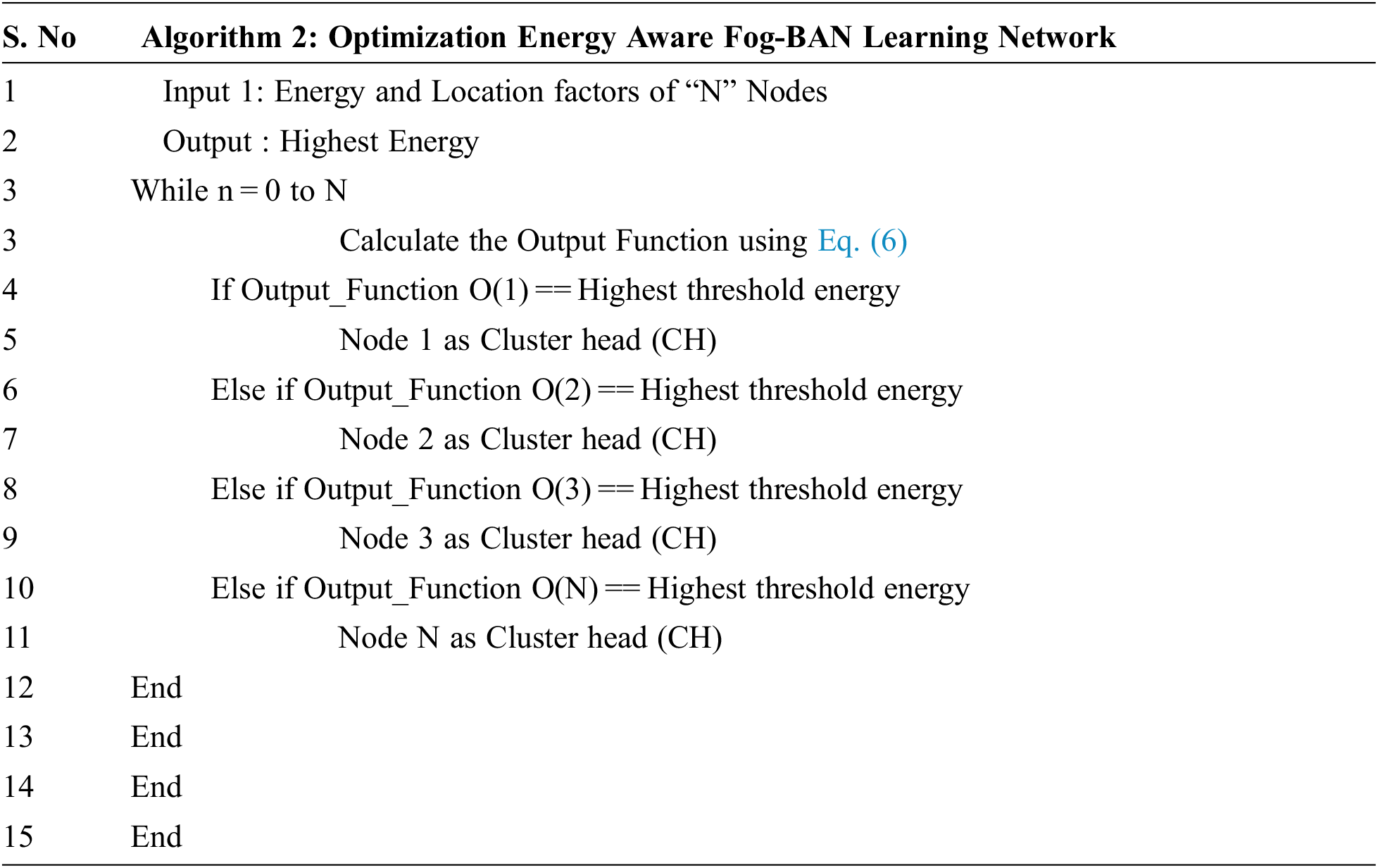
Finally cluster head with node ID selected is broadcasted to all ban networks, in which the nodes transmits the data to the selected cluster head and finally cluster head aggregates the complete data to the Fog for further analysis.
The experimentation has been carried out in real time using the MICOT boards as the BAN nodes interconnected with High configured Fog gateways. The amazon web service (AWS) is used for the monitoring and diagnosis process. Tab. 2 shows the specifications of test bed implemented for the experimentation. Micro python programming is incorporated for BAN nodes which sends the health care data to Cloud through Fog Gateways. Fogs are implemented on i7CPU with 2TB HDD, NVIDIA GeoForce GPU and 16GB RAM. The proposed optimized algorithm has been developed using TensorFlow 1.2.0 with Keras Backend which runs on the above configured Fog systems.

The proposed architecture is tested with the input vectors as mentioned in section in which the input features are feed to the optimized feed forward training networks that classifies the appropriate categories of routing. To evaluate the performance of proposed architecture in detecting the energy efficient path, metrics such as accuracy, sensitivity, specificity, recall and f1-score are calculated. Tab. 3 shows the mathematical expressions for calculating the metrics used for evaluating the proposed architecture.

Nearly 4,22,000 feature vectors are collected for 60 days that are used for training the proposed network. To overcome the class imbalance problem, we have selected 2,00,000 data for the perfect training. Tab. 4 illustrates the performance of the proposed algorithm with the different epochs and batch size.

To prove the excellence of the proposed architecture, we have compared the performance of with the other state-of-art classical learning models. Tab. 5 presents the comparative analysis of the different learning models used in the fog gateways in detecting the energy efficient paths.

The confusion matrix (Fig. 3) and ROC curve (Fig. 4) of the proposed framework in categorizing the energy efficient path and non-energy efficient paths. Tab. 5 presents the comparative analysis among the performances of proposed and existing algorithms. From the Tab. 5, it is found that proposed algorithm has shown the accuracy of 0.983 with 0.982 sensitivity, 0.977 specificity and high f1score of 0.982 in detecting the different paths. From the Tab. 5 it is evident that Fog based Optimized DL architecture has shown the better detection ratio in which the proposed algorithm performs better than the other existing algorithm.

Figure 3: Confusion matrix for the proposed algorithm in detecting the energy efficient paths
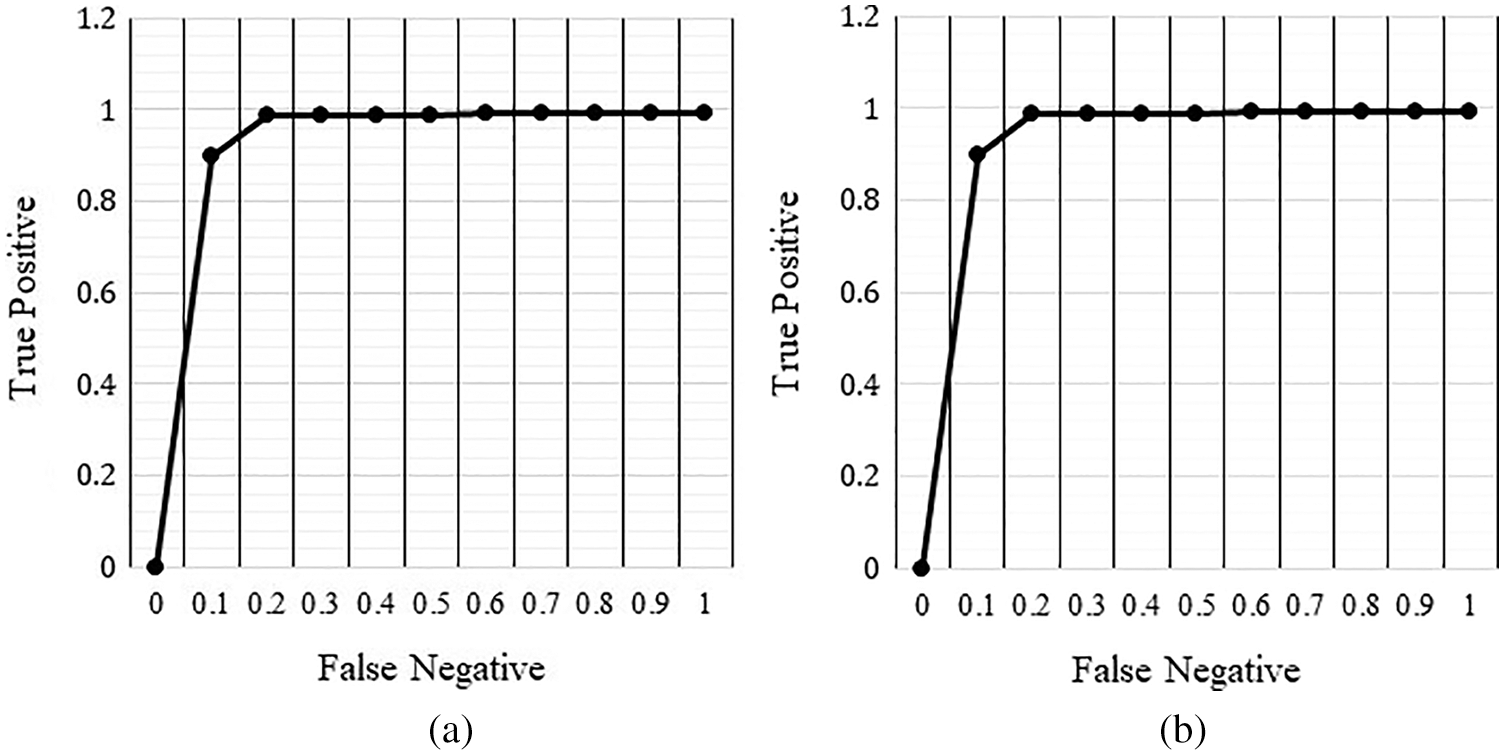
Figure 4: ROC characteristics of proposed architecture (a) in detecting energy efficient paths (b) in detecting the non-energy efficient paths
In this section, QoS centric metrics of the network is calculated and analyzed. Furthermore, the QoS performance of the proposed architecture along with other existing algorithms such as WORN, DEAR [23] and L-No-DeF Networks [24].
Figs. 5 and 6 illustrates the network Energy consumption using the different algorithms. From the Figure it is clear that proposed network has consumed energy of 60% after 15 h whereas other algorithms such as L-No-Deaf consumes 70% of energy, WORN-DEAR consumes 80% and DARE network drains completely after 15 h of time duration. It is evident from the Figures, integration of metaheuristic optimization in the Fog based learning network has consumed least energy compared with the other learning models.
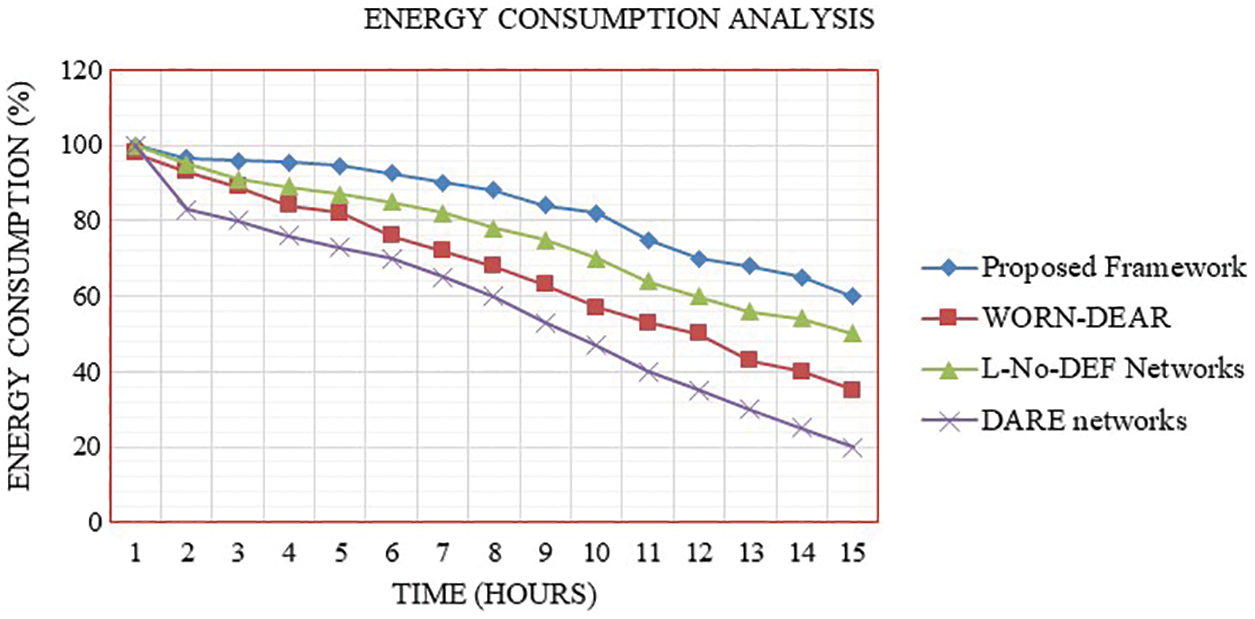
Figure 5: Energy consumption analysis among different algorithms with respective to the time duration
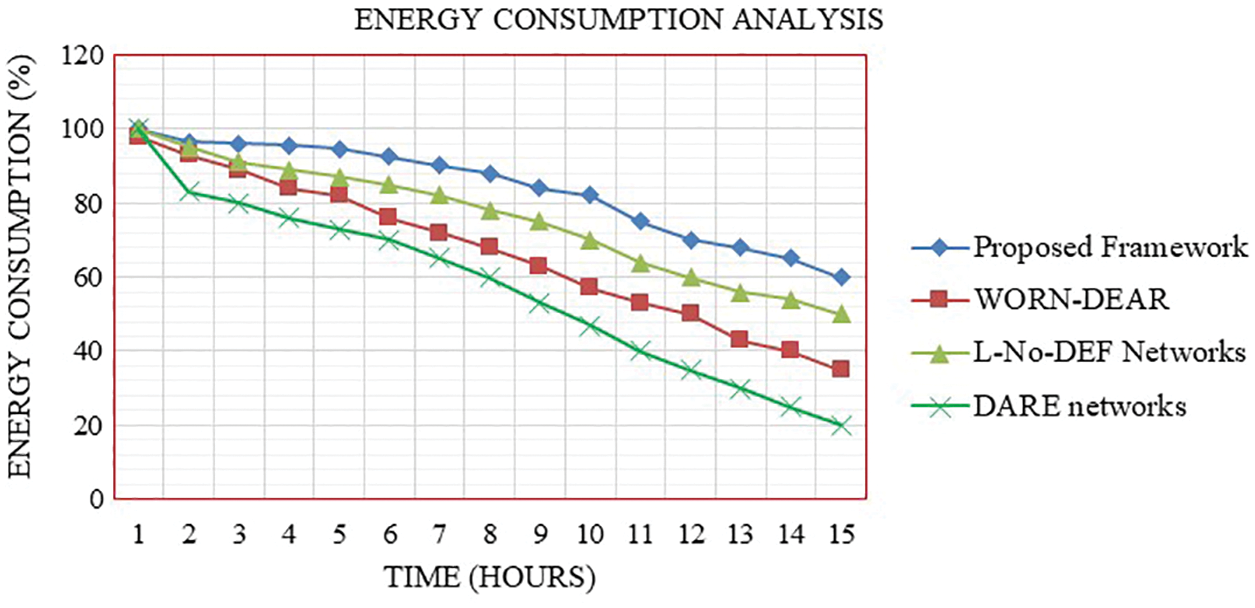
Figure 6: Energy consumption analysis among different algorithms with respective to the time duration
From the Figs. 7 and 8, ADR is measured in regards of response time of the fog networks with the transmitted data from the different nodes. It results that, the response time is nearly reduced to 30% when compared against L-No-Def Networks, 50% against WORN-DEAR networks and 60% against DARE networks.
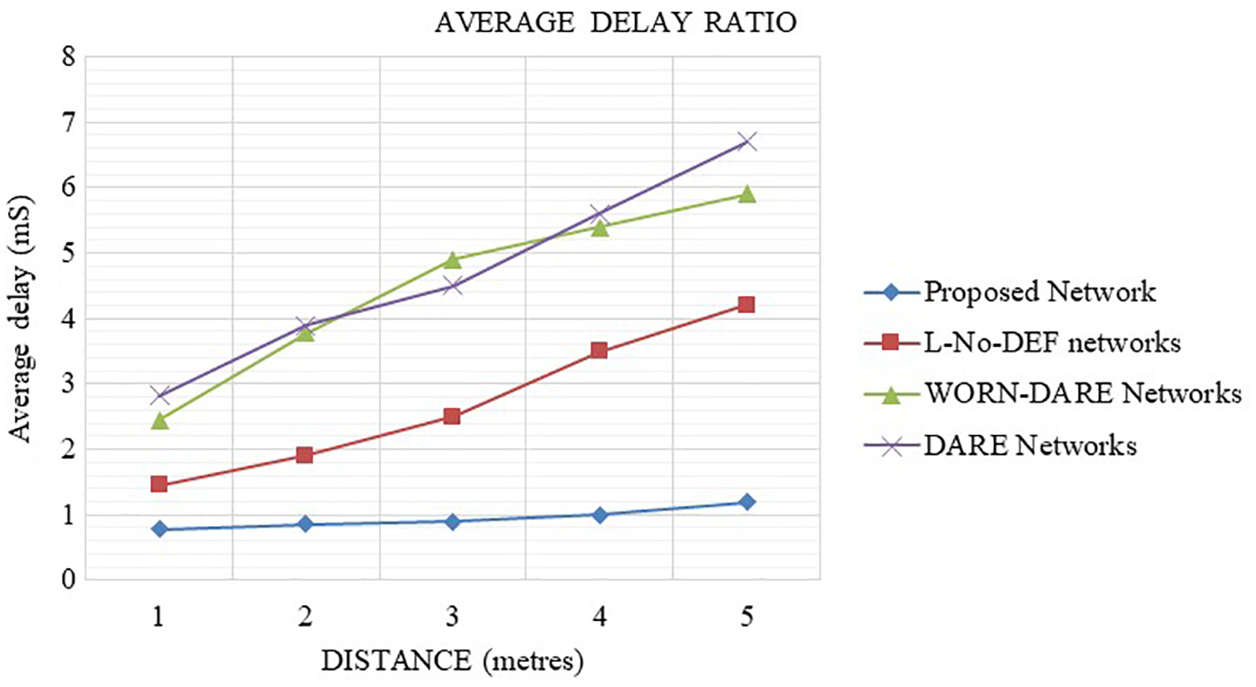
Figure 7: Average delay ratio for the different algorithms for the data transmission

Figure 8: Average delay ratio for the different algorithms for the data transmission
The paper proposes the novel intelligent fog driven BAN-IoT networks for monitoring the patients and its different characteristics such as latency, energy consumption and throughput were analyzed. The optimized DL algorithms has been designed for the reduction of fog gateways computational complexity to achieve an energy efficient network. Furthermore, this method is used to select the cluster head for achieving an energy efficient and less latency mechanism. The extensive experimentations has been carried out using 4,20,000 data vectors and validated the proposed algorithms along with the existing algorithm such as L-No-Def Networks and Fog driven BAN based WORN-DEAR networks. Meanwhile, the paper also compares the proposed optimized learning algorithm with the other state-of-art ML algorithms in terms of F1 score, prediction accuracy and precision. Further Energy consumption, Latency are calculated and compared with existing models. The proposed architecture has produced the best performances in detecting the cluster head in achieving the less energy and latency which makes it is more suitable for BAN-IoT networks. In future, the proposed BAN networks can improvised with the addition of security protocols and addition of bio-inspired algorithm with the DL to improve the QoS parameters of BAN networks.
Funding Statement: The authors received no specific funding for this study.
Conflicts of Interest: The authors declare that they have no conflicts of interest to report regarding the present study.
1. Q. D. Laa, M. V. Ngo, T. Q. Dinha, T. Q. S. Quekac and H. Shinc, “Enabling intelligence in fog computing to achieve energy and latency reduction,” Journal of Digital Communication and Networks, vol. 5, no. 1, pp. 3–9, 2019. [Google Scholar]
2. F. Bonomi, R. Milito, J. Zhu and S. Addepalli, “Fog computing and its role in the internet of things,” in Proc. MCC’12 Workshop on Mobile Cloud Computing, Helsinki, Finland, pp. 13–16, 2012. [Google Scholar]
3. M. Satyanarayanan, P. Bahl, R. Caceres and N. Davies, “The case for VM-based cloudlets in mobile computing,” IEEE Pervasive Computing, vol. 8, no. 4, pp. 4–23, 2009. [Google Scholar]
4. E. Cuervo, A. Balasubramanian, D. K. Cho, A. Wolman, S. Saroiu et al., “Maui: Making smartphones last longer with code load,” in Proc. ACM MobiSys, San Francisco, CA, USA, pp. 49–62, 2010. [Google Scholar]
5. H. Huang, Y. Cai and H. Yu, “Distributed-neuron-network based machine learning on smart-gateway network towards real-time indoor data analytics,” in Proc. DATE, Dresden, Germany, pp. 720–725, 2016. [Google Scholar]
6. M. V. Ngo, Q. D. La, D. Leong and T. Q. S. Quek, “User behavior driven mac scheduling for body sensor networks,” IEEE Sensors Journal, vol. 19, no. 17, pp. 7755–7765, 2019. [Google Scholar]
7. S. Feng, P. Setoodeh and S. Haykin, “Smart home: Cognitive interactive people-centric internet of things,” IEEE Communication Magazine, vol. 55, no. 2, pp. 34–39, 2017. [Google Scholar]
8. A. Meharouech, J. Elias and A. Mehaoua, “Moving towards body-to-body sensor networks for ubiquitous applications: A survey,” Journal of Sensors and Actuator Networks, vol. 8, no. 2, pp. 27, 2019. [Google Scholar]
9. A. Ali, K. Inoue, A. Shalaby, M. S. Sayed and S. M. Ahmed, “Efficient auto encoder-based human body communication transceiver for wban,” IEEE Access, vol. 7, pp. 117196–117205, 2019. [Google Scholar]
10. N. Srilakshmi and A. K. Sangaiah, “Selection of machine learning techniques for network lifetime parameters and synchronization issues in wireless networks,” Journal of Information Processing Systems, vol. 15, no. 4, pp. 833–852, 2019. [Google Scholar]
11. Y. H. Xu, J. W. Xie, Y. G. Zhang, M. Hua and W. Zhou, “Reinforcement learning (RL)-based energy efficient resource allocation for energy harvesting-powered wireless body area network,” Sensors, vol. 20, no. 1, pp. 44, 2020. [Google Scholar]
12. A. Gupta and V. K. Chaurasiya, “Reinforcement learning based energy management in wireless body area network: A survey,” in Proc. IEEE CICT, Allahabad, India, pp. 1–6, 2019. [Google Scholar]
13. D. Wang, J. Liu and D. Yao, “An energy-efficient distributed adaptive cooperative routing based on reinforcement learning in wireless multimedia sensor networks,” Computer Networks, vol. 178, pp. 107313, 2020. [Google Scholar]
14. M. Alrashidi and N. Nasri, “Wireless body area sensor networks for wearable health monitoring: Technology trends and future research opportunities,” International Journal of Advanced Computer Science and Applications, vol. 12, no. 4, pp. 506–512, 2021. [Google Scholar]
15. N. Bilandi, H. K. Verma and R. Dhir, “Performance and evaluation of energy optimization techniques for wireless body area networks,” Beni-Suef University Journal of Basic and Applied Sciences, vol. 9, no. 38, pp. 1–11, 2020. [Google Scholar]
16. V. Navya and P. Deepalakshmi, “Threshold-based energy-efficient routing for transmission of critical physiological parameters in a wireless body area network under emergency scenarios,” International Journal of Computers and Applications, vol. 43, no. 4, pp. 367–376, 2018. [Google Scholar]
17. I. Ahmad, F. Farhatullah, S. Ali, F. Ali, F. Faiza et al., “Reinforcement learning-based coexistence interference management in wireless body area networks,” International Journal of Computer and Systems Engineering, vol. 14, no. 11, pp. 446–453, 2020. [Google Scholar]
18. A. Mushtaq, M. N. Majeed, F. Aadil, M. F. Khan and S. Lim, “An intelligent cluster optimization algorithm for smart body area networks,” Computers Materials & Continua, vol. 67, no. 3, pp. 3795–3814, 2021. [Google Scholar]
19. S. Misra, S. Chatterjee, and M. S. Obaidat, “On theoretical modeling of sensor cloud: A paradigm shift from wireless sensor network,” IEEE Systems Journal, vol. 11, no. 2, pp. 1084–1093, 2017. [Google Scholar]
20. S. Madria, V. Kumar and R. Dalvi, “Sensor cloud: A cloud of virtual sensors,” IEEE Software, vol. 31, no. 2, pp. 70–77, 2014. [Google Scholar]
21. K. M. Monica and R. Parvathi, “Hybrid FOW—A novel whale optimized firefly feature selector for gait analysis,” Personal and Ubiquitous Computing, pp. 1–13, 2021. [Google Scholar]
22. A. S. Assiri, A. G. Hussien and M. Amin, “Ant lion optimization: Variants, hybrids, and applications,” IEEE Access, vol. 8, pp. 77746–77764, 2020. [Google Scholar]
23. P. Kumaresan, M. Prabukumar and S. Subha, “Heuristic approach to minimize the energy consumption of sensors in cloud environment for wireless body area network applications,” International Journal of Embedded Systems, vol. 12, no. 4, pp. 475–483, 2020. [Google Scholar]
24. S. Amudha and M. Mural, “Deep learning based energy efficient novel scheduling algorithms for body-fog-cloud in smart hospital,” Journal of Ambient Intelligence and Humanized Computing, vol. 12, pp. 7441–7460, 2020. [Google Scholar]
 | This work is licensed under a Creative Commons Attribution 4.0 International License, which permits unrestricted use, distribution, and reproduction in any medium, provided the original work is properly cited. |